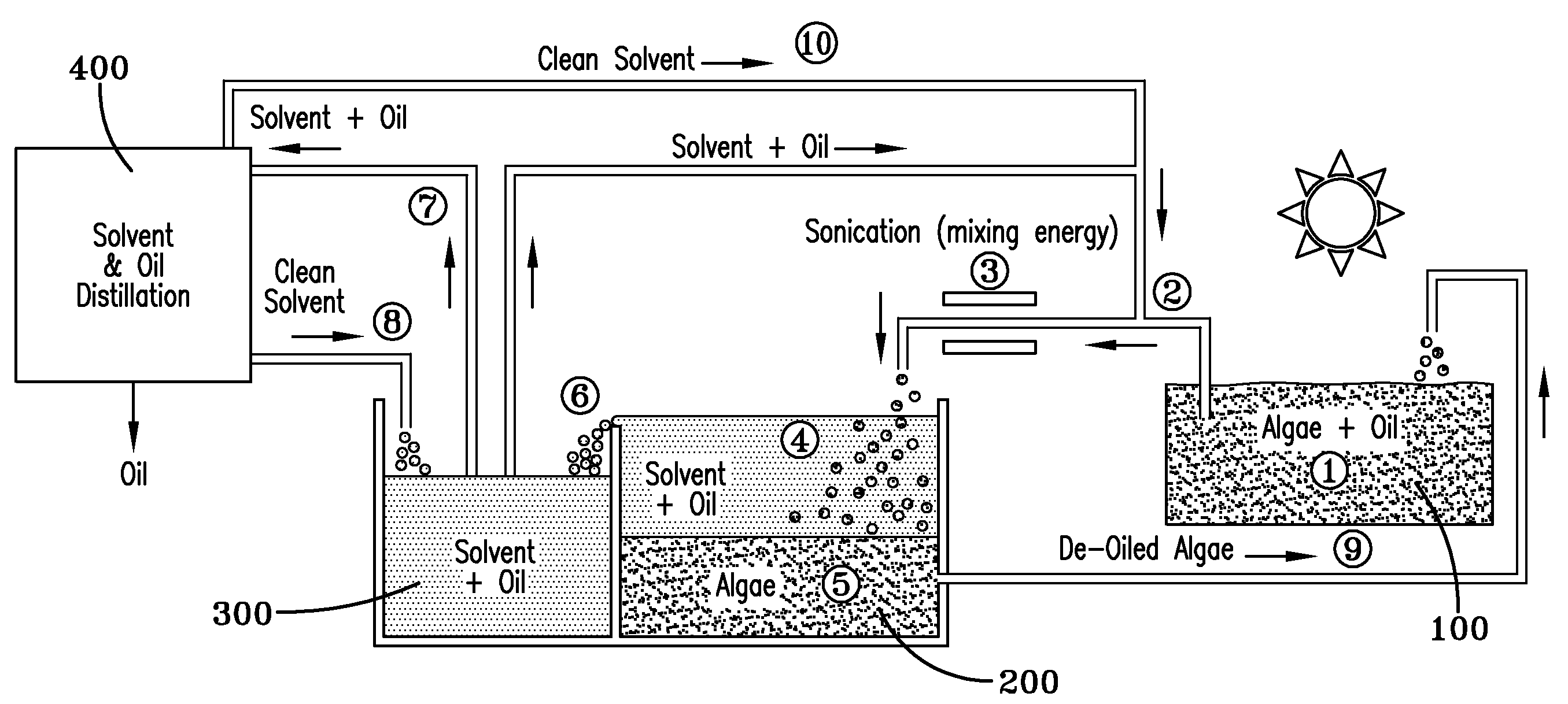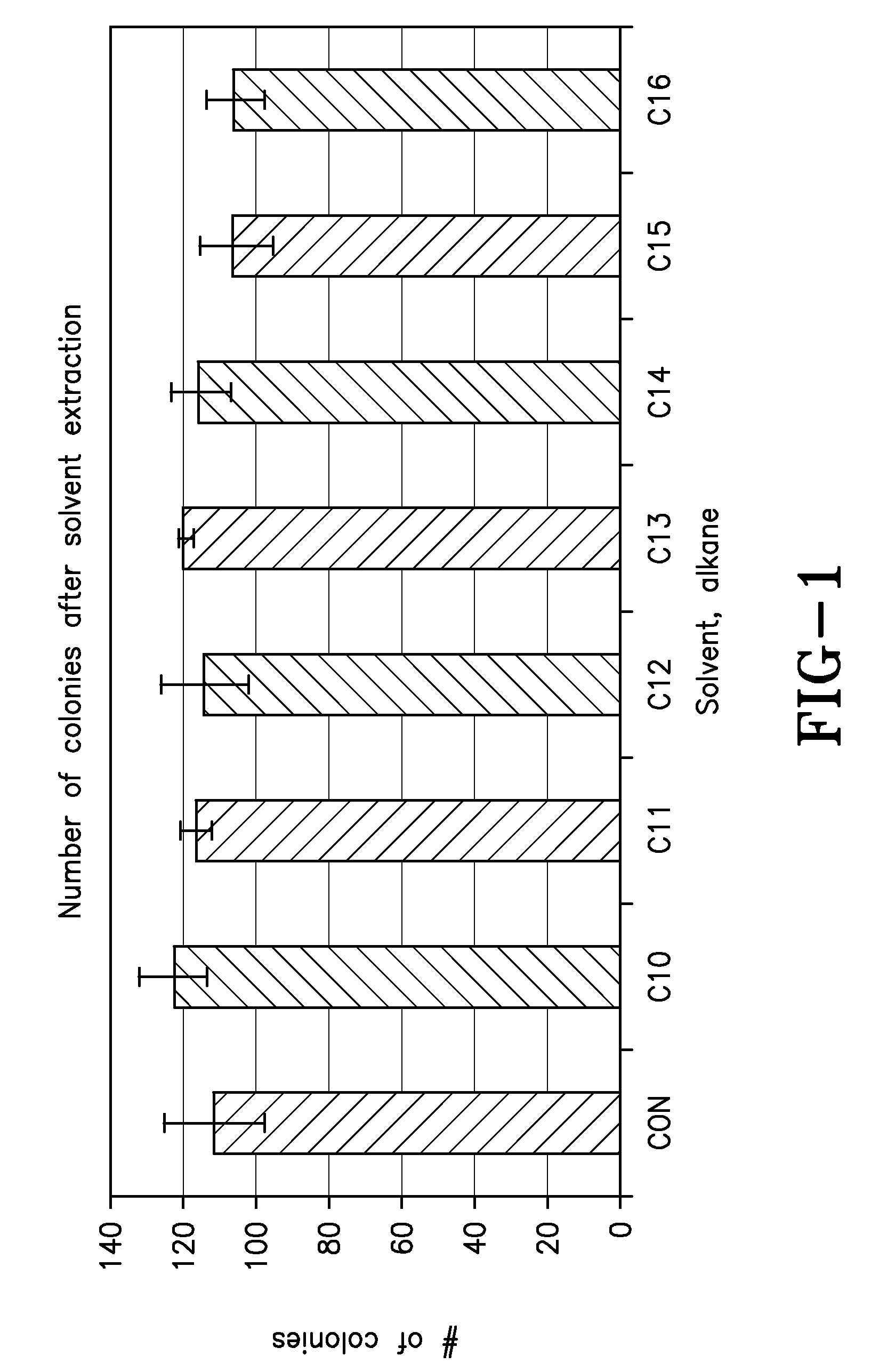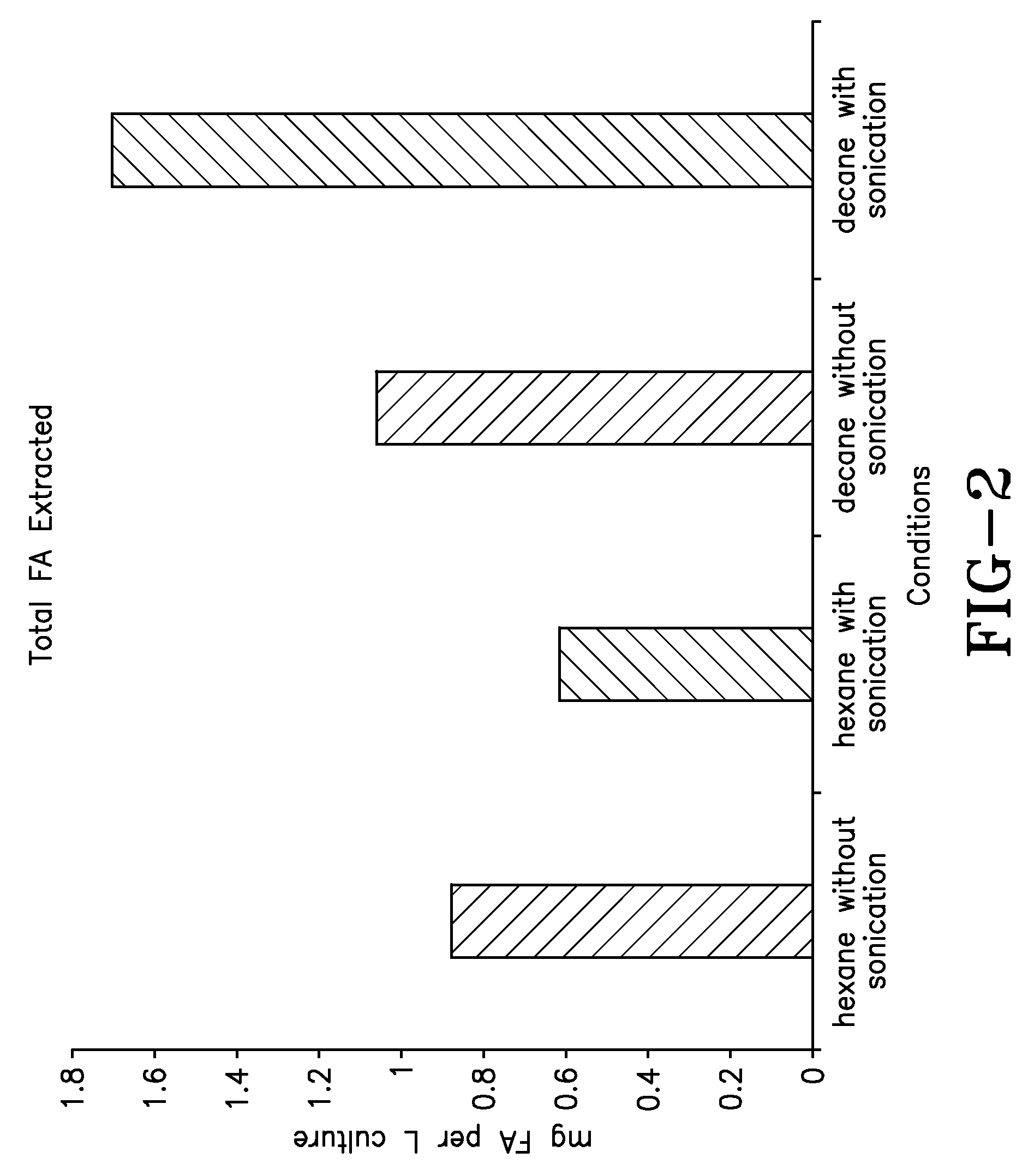Optimization of biofuel production
a biofuel and biofuel technology, applied in the field of biofuel production systems and methods, can solve the problems of dramatic downward swings and fluctuation of petroleum prices, and achieve the effects of enhancing lipid production, cell culture density, and enhancing lipid production
- Summary
- Abstract
- Description
- Claims
- Application Information
AI Technical Summary
Benefits of technology
Problems solved by technology
Method used
Image
Examples
example 4
Nondestructive Solvent Extraction Procedure with Yeast Materials
[0091]Red Star dry active baker's yeast (Saccharomyces cerevisiae)
Yeast Extract Proteose Dextrose medium (ATCC #1245)
Isopar L (EXXON through Univar)
[0092]Procedure and Results:
[0093]One gram of dry yeast was added to 200 mL of Yeast Extract Proteose Dextrose medium (YEPD) and incubated at room temperature with 200 RPM shaking for overnight. Ten mL of this culture was added to 150 mL of YEPD and grown as above. Then 20 mL of this overnight yeast sub-culture was combined with 20 mL of Isopar L and vortexed. Then the well mixed sample in a 250 mL Erlenmeyer flask was briefly sonicated and transferred to a 50 mL tube to facilitate solvent separation. Before extraction, one mL of the overnight culture was added to 8 mL of YEPD in a 15 mm×100 mm test tube and incubated overnight. One mL of the after solvent exposure was added to 8 mL of YEPD in a 15 mm×100 mm test tube and incubated overnight. The optical densities of pre-exp...
example 5
Species Screen of Various Algae for Solvent Stability
[0094]Similar to Example 4, Table 1 contains data showing that solvent extraction had similar effects in other strains.
TABLE 1Percent DeadODDead cells / field (preDead / UTEX #StrainSalinity0 h30 h64 hsolv / son)post1230AChlorellaIO / 30.6540.7390.8320 / 100,0%0 / 396,0%sorokiniana0 / 1000 / 2761602BChlorellaNone0.5130.4820.5861 / 202,0%0 / 215,0%sorokiniana0 / 1210 / 1632164CNannochloropsisNone0.1430.7080.3710 / 69,1%0 / 71,0%oculata1 / 670 / 852229DChlorellaIO / 30.1470.0760.1339 / 72,14% 0 / 8,0%Kessleri8 / 510 / 82341EChlorellaIO / 30.5170.5560.7491 / 244,1%0 / 282,0%minitissima4 / 5050 / 2392805FChlorellaNone0.4840.6560.7091 / 110,0%0 / 76,0%sorokiniana0 / 1540 / 9925GChlorellaIO / 30.9130.9451.17121 / 193,15% 30 / 465,7%protothecoides28 / 13615 / 174—HNannochloropsisIO / 30.6960.7970.9475 / 272,3%0 / 232,0%sp.12 / 3790 / 1931602IChlorellaIO / 30.2370.3230.4160 / 118,0%0 / 31,0%sorokiniana0 / 840 / 742164JNannochloropsisIO / 30.4200.6040.8562 / 420,0%0 / 283,0%oculata1 / 2790 / 269
example 6
Post-Treatment to Remove Emulsion
[0095]Although capable of accelerating the extraction of lipids from cells, solvents in aqueous solutions often form very stable emulsions when exposed to ultrasonic energy or vigorous mixing. This clouding (emulsion) of the aqueous solution is created by the nebulized solvent which does not easily coalesce, even after lengthy settling periods. Those skilled in the art utilize methods to accelerate the separation of solvent from the aqueous fraction. These include use of microfiltration (eg., borosilicate microfiber), ultrasound standing waves, coalescing media, hydrocyclones, addition of flocculating agents (e.g., aluminum) or gas floatation. These methods vary in speed and efficiency but will selectively remove trace solvents from the aqueous solution, allowing its recapture, and prevent potential system losses. For example, an emulsion of solvent in water (0.03%), quantified by its reduction of light transmission through a 1 cm light path at 350 n...
PUM
| Property | Measurement | Unit |
|---|---|---|
| frequency | aaaaa | aaaaa |
| frequency | aaaaa | aaaaa |
| frequency | aaaaa | aaaaa |
Abstract
Description
Claims
Application Information
 Login to View More
Login to View More - R&D
- Intellectual Property
- Life Sciences
- Materials
- Tech Scout
- Unparalleled Data Quality
- Higher Quality Content
- 60% Fewer Hallucinations
Browse by: Latest US Patents, China's latest patents, Technical Efficacy Thesaurus, Application Domain, Technology Topic, Popular Technical Reports.
© 2025 PatSnap. All rights reserved.Legal|Privacy policy|Modern Slavery Act Transparency Statement|Sitemap|About US| Contact US: help@patsnap.com



